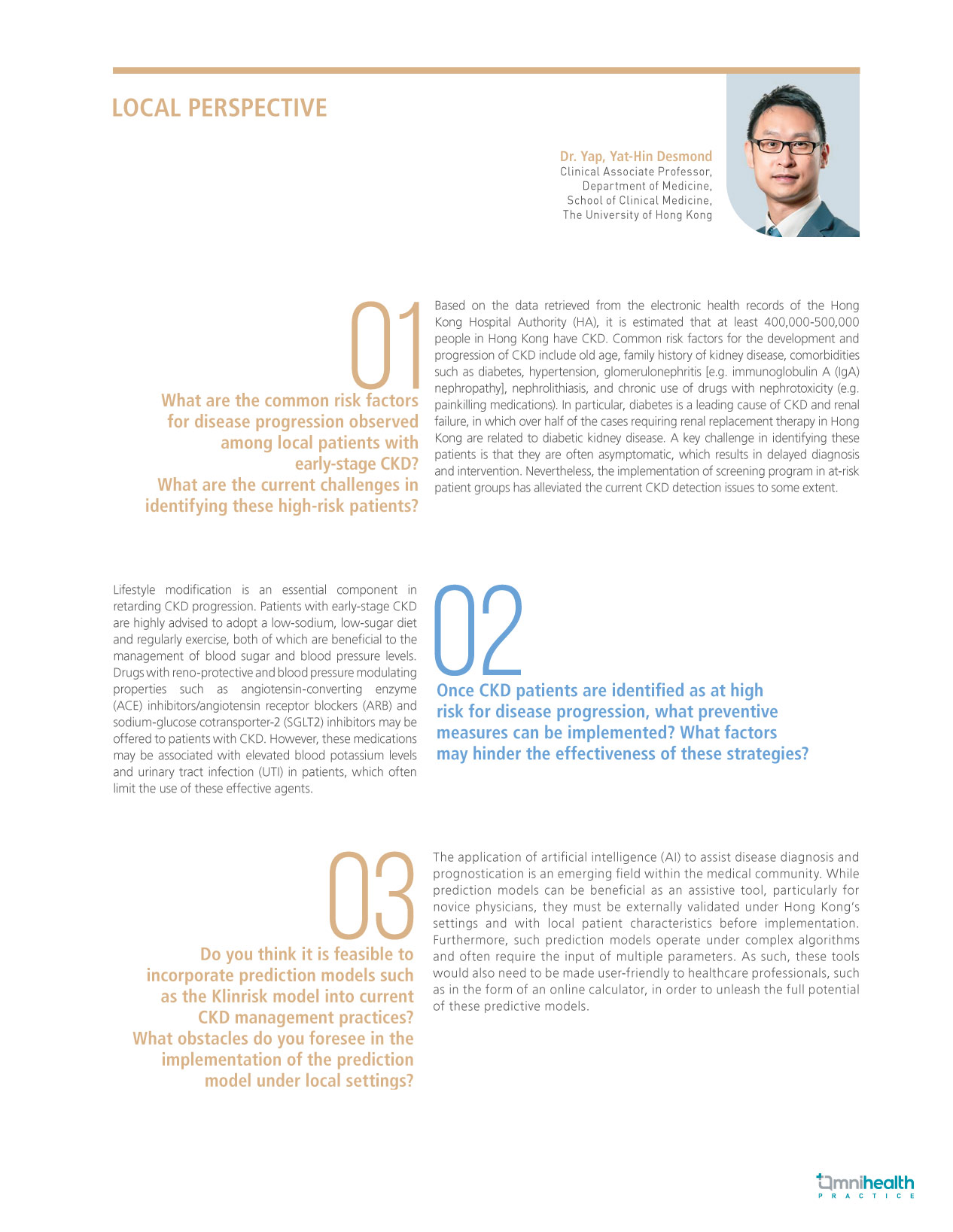NEWS & PERSPECTIVE
Novel assessment tool for predicting CKD progression and identifying high-risk individuals in early-stage CKD: The Klinrisk model
Current chronic kidney disease (CKD) management strategies are dependent on the estimated glomerular filtration rate (eGFR) of patients, which gradually shapes them into a one-size-fits-all care model that lacks personalized treatments.1 In addition, despite the availability of risk assessment tools such as the Kidney Failure Risk Equation (KFRE) that predicts the risk of progression to end-stage renal disease (ESRD), tools for assessing CKD progression risks in early stages that may enable early intervention are mostly absent, resulting in CKD being dominantly recognized and treated in late stages.1 While effective disease-modifying therapies for CKD are available, their therapeutic windows are narrow and often mistimed as high-risk CKD patients receive suboptimal recognition during the early stages of CKD under the current care model.1 This leads to patients being burdened with significant hospitalization costs from potentially avoidable dialysis, while low-risk patients might be over-treated and experience unnecessary side effects and costs.1
As such, researchers have developed the Klinrisk machine learning model which analyzes the values of age, sex, and routinely collected laboratory data (e.g. results from complete blood cell counts, chemistry panels, comprehensive metabolic panels, and urinalysis) among patients with early-stage CKD to predict the risk of disease progression, defined as a composite of 40% decline in eGFR or kidney failure.1 During the ASN Kidney Week 2023, Professor Navdeep Tangri from the University of Manitoba, Canada, presented results from an external validation study that he and his team conducted in a large United States cohort consisting of patients under the coverage of commercial insurance, Medicare Advantage, and Medicaid.1
The model had previously been externally validated in an independent sample (n=100,167) in Alberta, Canada, and in clinical trial datasets including the CANVAS Program and CREDENCE trial (n~14,000) and the FIDELITY trial (n~13,000).1 In this external validation, the Klinrisk model was applied to a population of over 4.6 million adults (4,410,131 with commercial insurance, 341,666 with Medicare Advantage, and 93,056 patients with Medicaid coverage).1 It was found to have an overall 80% accuracy in predicting progression to 40% eGFR decline or ESRD across 5 years, with all cohorts exhibiting an area under the receiver operating characteristic (ROC) curve (AUC) ranging from 0.80 to 0.83 for the prediction of progression at 2 years of follow-up and from 0.78 to 0.83 at 5 years of follow-up.1
The model was also shown to be efficacious in highlighting high and low healthcare resource utilizers by comparing the high-risk (top 10%) and low-risk (bottom 50%) patients at baseline and 2 years of follow-up.1 The proportion of high-risk patients with an inpatient visit for CKD at follow-up was almost 10 times greater than that of low-risk patients (32.03% vs. 3.41%).1 Furthermore, the all-cause inpatient monthly visits per patient per month (PPPM) of high-risk patients was more than triple that of low-risk patients (0.2 vs. 0.06).1 The total CKD-related healthcare costs PPPM was also relatively higher in the high-risk group compared to the low-risk group, regardless of insurance type (commercial: 652 vs. 22 USD, Medicare Advantage: 1,581 vs. 101 USD).1
To conclude, the Klinrisk model has been shown to be highly accurate in predicting CKD progression, health resource utilization, and costs of care across the commercial insurance, Medicare Advantage and Medicaid populations.1 It can be easily implemented as long as laboratory data are available, without the need for biomarker assays or access to electronic health record.1 With early CKD risk stratification, the appropriate level of treatment can be provided for each patient and prevent the risk of lifetime dialysis, hospitalizations, and unnecessary costs of care.1


